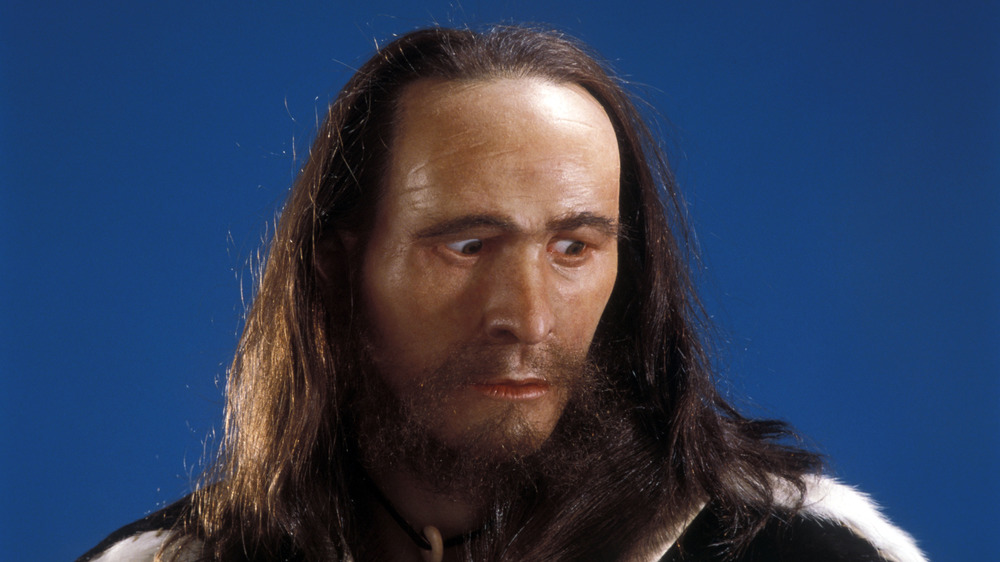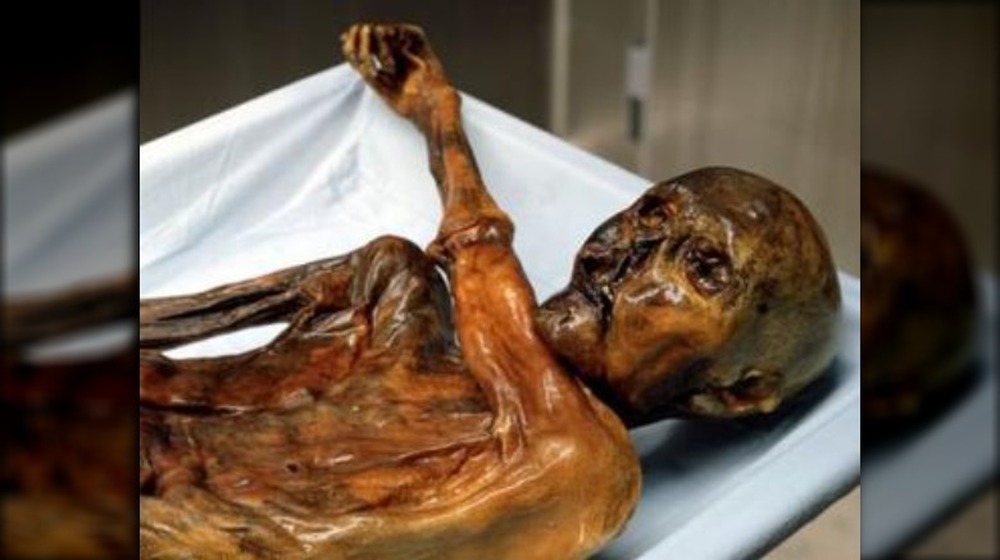The Oldest Cold Case: Who Killed Otzi The Iceman?
On September 19, 1991, a pair of German hikers stumbled across a body frozen into the ice on the Ötztal Alps, on the border between Italy and Austria. According to the South Tyrol Museum of Archaeology, Erika and Helmut Simon thought they'd come across the body of someone who had died in a recent mountaineering accident. But little did they know that they had just uncovered the world's oldest cold case. For Ötzi, as he's come to be called, didn't die of natural causes. He was murdered.
The South Tyrol Museum of Archaeology, where his remains have been on exhibit since 1998, states that for a decade after his discovery, it was believed that his death had been an accident. It wasn't until 2001 that scientists saw in an X-ray image that he has a flint arrowhead sunk deep into his left shoulder, which severed his subclavian artery. The body also shows signs of severe head trauma, which may have been the result of falling after being struck by the arrow. He most likely bled to death within minutes of the attack.
Scientists have discovered a lot about Otzi, except for why he was killed
Although the motives of Ötzi's killer will most likely remain buried in the past forever, scientists have been able to learn a lot about the man who died over 5300 years ago. Ötzi is older than the Pyramids of Giza, older than Stonehenge. He's from the Copper Age and believed to have been part of Neolithic migrations through the Alps, when people brought farming to Europe. According to National Geographic, he even has living relatives in Austria: Scientists identified 19 people with the same genetic markers as Ötzi out of a group of 3,700 anonymous blood donors.
Researchers have also found that even had he not been murdered, Ötzi probably wouldn't have lasted much longer anyway. He had hardened arteries, gallstones, bad joints, and a disconcerting growth on his pinky toe that may have been caused by frostbite. His gut was riddled with parasites, and his dental hygiene was atrocious.
Ötzi the Iceman was also covered head to toe with tattoos. They weren't made with a needle, but rather by rubbing charcoal into fine cuts made in his skin. It has been conjectured that the tattoos were meant to mark points on his body for acupuncture. Researchers have even been able to figure out what he ate for his last meal — grains and wild goat meat — but the case of his murder remains cold to this day.

